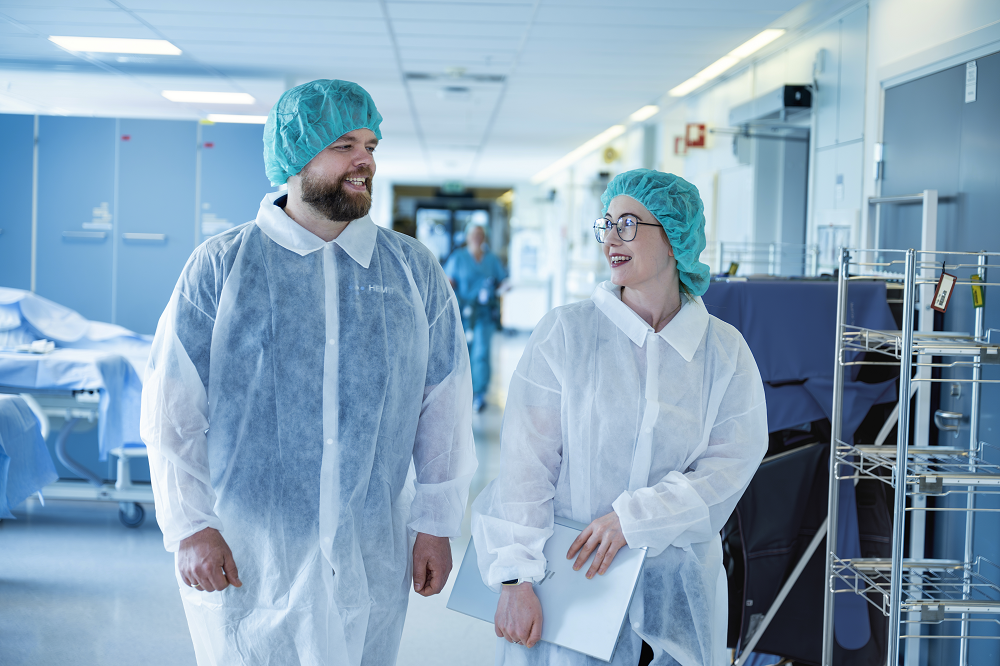
Industry:Healthcare
Region:Europe
Client:InHealth
Making work better for healthcare practitioners with RPA

Client Overview
InHealth is the UK’s largest specialist provider of diagnostic and healthcare solutions, with a mission to make healthcare better. Based across more than 800 locations, it provides tests, scans, assessments, and procedures for three million patients each year, largely from the NHS. The company’s range of services includes MRI, CT, PET-CT, diabetic eye screening, endoscopy, cardiac, and more.
Partner

The NHS offers healthcare services to 1.5 million patients every day, supported by 1.2 million members of staff and specialist service providers such as InHealth.
As a long-standing and trusted partner of the NHS, InHealth delivers highly skilled staff, state-of-the-art technology and a sharp focus on patient satisfaction, all of which is underpinned by vital administration and management.
This type of operational support can be time consuming and unrewarding for staff, taking time away from the value-adding activities that ultimately deliver excellent patient care. With this in mind, InHealth began its automation journey in July 2021 with a clear plan.
Our vision from the outset was to improve our people experience, making work better for our teams and to free up their time so they could spend more of it doing what they love—supporting our patients.
Harpreet Sanghera • Head of Transformation at InHealth
“Starting with a focus on our shared services team, which is responsible for areas such as HR, finance, legal and procurement, the idea was to take away the mundane, transactional work that disengaged colleagues in support roles,” Sanghera continues. “We knew this was important to them, thanks to a staff survey that had a clear theme around admin and time-consuming tasks.”
Getting going
The first process automated was the onboarding of staff. With up to 60 new colleagues joining InHealth every month, each one requiring a host of admin activities that must take place, largely related to capturing data, such as form completion and progressing recruitment checks.
Introducing robotic process automation (RPA) to complete these tasks aimed to reduce manual errors and the time taken for new starters to be ready to get going in their new roles.
After just the first week, InHealth benefited from a reduction in manual processing times of more than three hours per candidate, while also eliminating the number of human errors.
The original automation was a great success, thanks in part to the support InHealth gained from Tquila Automation using the UiPath RPA software. “We had excellent external partners to help get us off the ground with our first process,” Sanghera says. “Their guidance, training, insights and feedback were vital in building our approach. We didn’t do everything right first time but sharing knowledge and experiences while collaborating on solutions allowed us to get it right second time round.”
Expanding RPA throughout the business
With the first robot in place, Sanghera began to develop his team and expand RPA into other areas. “We started small and grew as success was delivered. Starting with one process before scaling up, helped us to build on achievements, absorb failures and use learnings to make our next attempt even better,” he enthuses.
Next on the list of priorities were processes in billing, VAT applications and management of IRIS software, which is used for various accounting, HR, payroll and training activities.
We worked with subject matter experts in each function to understand their issues, focusing on the work they hated and prioritizing the processes they wanted to transform. This allowed the RPA team to do two things. Firstly, to discover how processes worked. Secondly, to redesign them in partnership with staff.
Harpreet Sanghera • Head of Transformation at InHealth
By May 2022, four processes were fully automated with the assistance of Tquila and 17 in total across shared services. At that point, InHealth had saved nearly 21,000 hours of work within the shared services and patient support functions. The team expects to save a total of nearly 42,000 hours by December 2022.
Overcoming challenges
But achieving this hasn’t come without its challenges. A major consideration was how InHealth could bring its staff on the automation journey. There’s sometimes a misplaced worry that software robots will take jobs from people. This couldn’t be further from the truth. RPA can take on tasks, freeing people to do more valuable things, but it can never replace a person.
This belief was central to their approach. “We wanted our people to see how RPA could help them in their daily roles and used a variety of communication channels to raise awareness and showcase change,” he explains.
The team ran a campaign of constant communication, including stories that introduced RPA, competitions for staff, sharing video content and real-life examples, and recognition for subject matter experts working with software robots. Ultimately, this focus on communication, along with determination and technical ability, has helped embed automation throughout the business.
Sharing advice
When asked what advice Sanghera would give others embarking on their own automation journey, he’s quick to respond. “For me, the most important point is to show its worth from day one. We were able to articulate how RPA would deliver ongoing value,” he says, although he’s quick to point out that it doesn’t always mean a time saving. It could be other types of value for patients, customers, and staff.
“You need to recognize this is not an IT project or a simple change,” he continues. “It’s about staff transformation and improving digital skills and capabilities among the workforce while benefitting from the operational efficiencies RPA offers.”
“With digital transformation as the focus, we’re able to utilize technology to give better staff and patient experience. Making incremental changes is vital to the success of staff acceptance when change is introduced. Taking this into account, working in an agile way has allowed us to showcase benefits of these small changes, that have over time started to bring big impact to the way of working.”
Wrapping up his advice, Sanghera says it’s vital to get senior buy-in from the start. “Without executive sponsorship we could not have achieved what we did,” he admits. “Aligning with them supported budgets and prioritization, built momentum and allowed smooth change management.”
Reflecting on InHealth’s journey, Sanghera says it’s important not to stop just because it’s hard. “We continued despite challenges we faced. There were many times where we could have shut down the project owing to lack of resources, higher operational priorities, delays or where the value delivered was not as expected.”
Our experience with RPA showed that once you start, you need to continue. Otherwise, you stop building value. And high-cost, low-value is never where you want to remain.
Harpreet Sanghera • Head of Transformation at InHealth
This couldn’t be a more important point to end on. Regarding critical patient care, it’s vital the healthcare sector strives to make work better for healthcare practitioners so they can provide the best patient experience. And RPA is an important and cost-effective way to achieve it if implemented well.
InHealth now stands as a fantastic example of what can be achieved when automation is rolled out effectively. Just imagine what could be achieved if the entire healthcare system followed suit.
Related case studies
Ready for your own case study?
Speak to our team of knowledgeable experts and learn how you can benefit from agentic automation.






